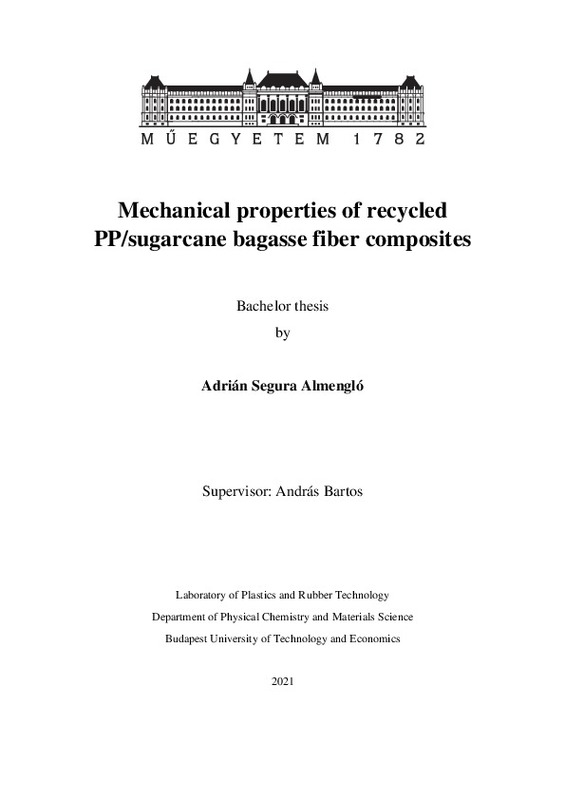|
Resumen:
|
[ES] En las últimas décadas, el consumo de polímeros empleados en el día a día ha ido
aumentando considerablemente y con ello también la necesidad tanto de obtener la
materia prima necesaria, así como gestionar adecuadamente ...[+]
[ES] En las últimas décadas, el consumo de polímeros empleados en el día a día ha ido
aumentando considerablemente y con ello también la necesidad tanto de obtener la
materia prima necesaria, así como gestionar adecuadamente los residuos generados. Es
por ello que el interés en encontrar métodos que disminuyan la cantidad de materia prima
necesaria, así como de poder alargar la vida útil de los polímeros se ha incrementado de
manera notable. Debido a esto, la investigación y el estudio de composites formados por
una matriz polimérica y refuerzos de fibras naturales lleva generando un gran interés
desde años atrás, así como los procesos de deformación micromecánica que puedan
producirse durante su empleo; sin olvidar el cómo afecta el reciclaje de estos composites
a sus propiedades mecánicas.
Este trabajo presenta el estudio de composites formados por polipropileno H649
(PP) y fibra de bagazo de caña de azúcar (SF). Se realizan diferentes muestras de
composite variando tanto la cantidad de SF como la inclusión de un agente enlazante. Se
realizará en primer lugar la extrusión de la materia prima para la formación del composite,
así como una segunda extrusión para obtener las probetas para los ensayos, de las cuales
se utilizarán entre 18 y 20 y el resto se triturarán para reciclar el composite. Se realizan
los ensayos para obtener las propiedades mecánicas como el esfuerzo a la tensión, el
módulo de Young, la resistencia al impacto. Simultáneamente al ensayo de tensión, los
procesos de deformación locales se detectan mediante el empleo de la técnica de emisión
acústica (AE).
Los procesos de triturado del material se repiten dos veces con el fin de simular el
proceso de reciclaje y estudiar el efecto de los procesos de deformación micromecánicos
y las propiedades mecánicas macroscópicas.
[-]
[EN] In the last few decades, the consumption of polymers used on a daily basis has
been increasing tremendously, and so with that, the necessity of obtaining the necessary
raw materials, as well as the management of the ...[+]
[EN] In the last few decades, the consumption of polymers used on a daily basis has
been increasing tremendously, and so with that, the necessity of obtaining the necessary
raw materials, as well as the management of the generated waste. For this reason, the
interest on finding new methods for decreasing the raw material quantity needed, as well
as increasing the useful life of the polymers has increased significantly. Accordingly, the
investigation and research of composites based on a polymeric matrix and natural fiber
reinforcements have been generating a great interest since years ago, as well as the
micromechanical deformation processes which occur during their use; without forgetting
how the recycling processes affect to their mechanical properties.
This project presents the research of recycled polypropylene (PP)/sugarcane
bagasse fiber (SCB). Different samples of composites were prepared, variating the SCB
proportion and the application of a coupling agent. In first place, the extrusion of the raw
materials was carried out for composite preparation, then injection molding was used to
obtain dogbone specimens, from which 18-20 pieces were used and the rest was ground
for recycling the composite. Mechanical properties like Young’s modulus, yield stress,
tensile strength and corresponding deformations, as well as impact resistance were
determined. Simultaneously with the tensile testing, local deformation processes were
detected using the acoustic emission (AE) technique.
The grinding steps of the materials were repeated twice in order to model the
recycling process and to study its effect on the micromechanical deformation processes
and on the macroscopic mechanical properties.
[-]
|





![ZIP archive [ZIP]](/themes/UPV/images/zip.png)


